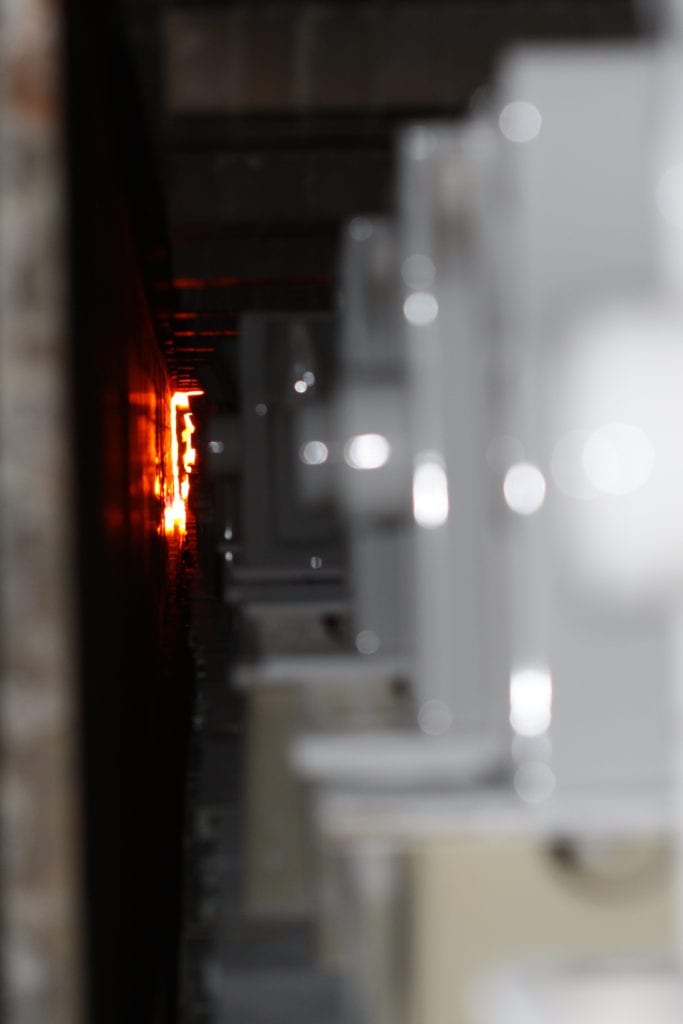Stage 8 - Firing
The main production kiln, known as Kiln 6 was built in 1983. It was a tunnel kiln of modular construction and over 90m in length. It was delivered in sections and assembled on-site by the Bricesco company. It replaced a pair of brick-built kilns (Kilns 1 & 2) from the 1950’s.
In the late 80’s and early 90’s it was complemented by two versatile intermittent kilns which could be used for once firing and refiring as required.
Sprayed pieces were loaded onto kiln cars on the placing line. The placing surface of the piece would be cleaned to ensure that during firing the glaze would not stick to the kiln batt it was being placed on. Strips of polystyrene (which would melt away during firing) could also be put between the piece and the batt to eliminate sticking and also reduce friction as the piece shrank during firing.
After placing, the cars would be automatically transferred from the placing line to the kiln entrance. To maintain the kiln atmosphere one car at a time was moved into a vestibule between two doors. When there was a space the in the kiln the car was moved into the kiln.
Kiln cars were pushed through the kiln by a powerful hydraulic ram under the track. It pushed the first car at the entrance which in turn pushed all the other cars through the kiln. When the ram had reached a car’s length it returned to pick up the next car. The kiln contained 52 cars in total.
It would take the cars 14 – 16 hours to travel through the kiln allowing the products to slowly heat up until they reached the firing zone in the centre at around 1200c. They would then gradually cool before reaching the exit and the kiln cars would be transferred to the unloading area. From here the cars would travel on to the placing area and the cycle would start again.
(The building within which Kiln 6 was situated was the only surviving building of the former Electro Bleach works. Originally the cell room, this was turned into the kiln room by the Steventon’s when they acquired the site.)




